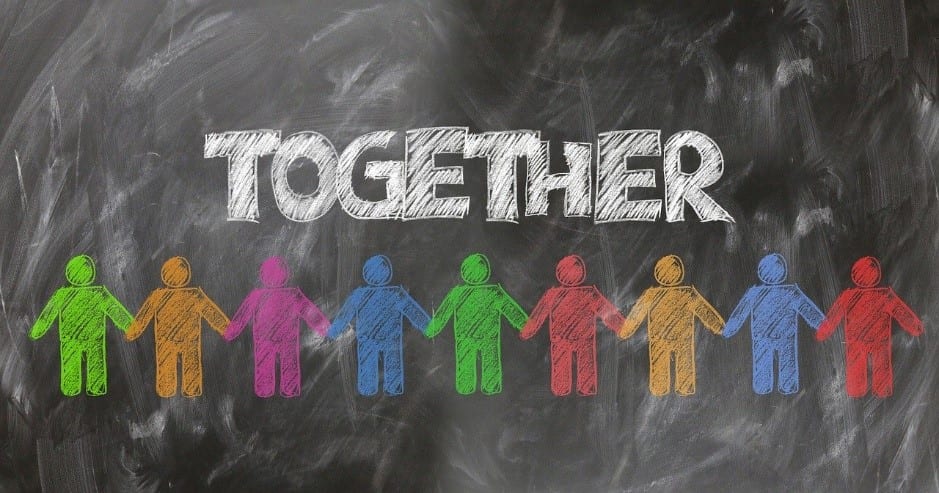
In the current situation we all find ourselves in, companies are having to be responsive and react quickly to government advice to ensure employees are safe and well at home. Once this is achieved, almost immediately afterwards comes the economic reality of how this will impact the top and bottom line. Companies will want to do the right thing and look after their employees of course, but as the new watchword for profit becomes “break-even”, we are left with the question of how can companies break-even with costs remaining static and sales dropping, without moving away from their company values? Indeed, companies are stuck between a rock and a hard place. We are already seeing redundancies across the board and everyone is rushing to the dictionary to learn what “furloughing” is, and then moments later it’s tripping off the tongue with consummate ease as companies are dealing with their reality. The bigger question we therefore need to ask ourselves is, just what impact is this having on us all?
The need to belong is important

Image by Gerd Altmann from Pixabay
So, what is this thing that pulls us together in groups, whether that be social or in a work environment? Maslow identified it as the “need to belong”. Hertzberg identified a lack of it as a key factor in leading to extreme dissatisfaction in the workplace. In today’s language we might recognize it more as “Organizational Culture” or if you prefer “social glue”; it’s the adhesive that sticks people together and to the company values. ’’ It’s that wonderful feeling we get through team bonding and being committed to each other to make the company work effectively. So, what exactly is going on with any company’s social glue right now?
As hard as this may be to contemplate with everything else that’s going on, companies need to be turning their attention very quickly to the next steps in terms of ensuring their employees are not just OK but more than OK; they need to be ensuring that everyone is focused on the values that holds the team together, if nothing else to ensure that people are in a “good place” mentally. Every mind matters of course, so how do we access those thoughts to allow us to be able to keep people focused and motivated through these current times and confident and reassured for the longer journey?
The key question is, how are we trying to keep our teams together in a meaningful way to keep that social glue working both for now and the future? In the short term we must turn to online video technology of course, which has been brilliant for us all, but what about that time when the teams must come back together? How will people feel once they must put on the “work attire” and get back on the commuter runs? There will also be the inevitable parting from the ways they have suddenly adapted to in terms of working from home; so it’s not going to be as easy as saying “ok everybody, it’s now clear to come back to the office, see you Monday”.
Companies need to be thinking around three things when it comes to their own social glue which centre on 1) How do they make sure their employees are not just glossing over the situation with a smile and a wave on a video call but really understanding how they are thinking and feeling 2) How this is maintained throughout the “lock down” period, and 3) How this then impacts on bringing the team back together when this is all over. We want our people to return in great shape mentally and ready to knit back together seamlessly; but will they?
Be careful what you think because your thoughts become your world

Image by Luisella Planeta Leoni from Pixabay
So, we are now considering the longer term but where do we begin? We talk about behaviours in the workplace, but right now is it behaviours we should be considering or is it more what people are thinking? What are people thinking right now whilst they sit at home to reflect what is going on in the world around them? How is that impacting on their performance personally and professionally and how are they thinking about the situation currently?
We are all going through a raft of webinars, team meetings through video content, using various social media platforms to “K.I.T.” to keep spirits high and everyone is doing their best to make a good go of the situation. However deep down, once the call is over, what then? Essentially, if we think it through, when we speak to people and ask them how they are, what we are really asking isn’t “How are you behaving towards this current situation?” but “What are you thinking right now about all of this and how is it making you feel?”
How we see the world and our place in it determines our belief systems and attitude. From there our attitude drives how we feel about a certain thing or situation, ultimately this moves in to how we behave and perform both personally and professionally. Right now, we need to be at our best, especially for ourselves, this in turn will impact on those around us, never more has this been important than the present day. Of course, the performance in our job role at present may be a challenge, there is a lot of uncertainty about.
However, very soon companies need to be thinking about how they constructively and proactively keep their company culture going, however difficult that may seem. One of the best ways of keeping people in a positive mindset is to support them in feeling they are contributing and doing a great job. In short, they need to ensure their “social glue” doesn’t come “unstuck” by ensuring their people are thinking in the right way about themselves and the world around them.
Where do we go from here?

Image by Gerd Altmann from Pixabay
So, what is available for companies to utilise to keep that social glue together, how do they know what to apply and how much? Also how do we ensure we are not just understanding how people think but that we still keeping them, productive, motivated and developing? It’s an interesting question and something that the research of Dr Robert Hartman uncovered with his theory and now highly validated model of “value mathematics” or formal Axiology.
There’s some interesting material available to enable those companies who are keen to explore how their employees are thinking about what is happening now and prospects for the future. For instance, it is possible to measure structure of thought via an online thinking exercise. In short, it allows us to identify the personal internal valuing system or thinking patterns that influences our perceptions, decisions and actions and can predict how we are likely to behave in any given situation. This in turn drives what we do, in other words behaviour, ultimately showing how that converts into performance both at home and in the workplace. This insight is valuable at any time but particularly so right now.
So, how can you gain some of this insight for you and your team so you can ensure you keep your social glue still sticking? We’d like to help. We’re sharing a pragmatic and simple methodology that can get a discussion going and act as a catalyst to stimulate thinking and provide direction to improve the way teams approach innovation. As you will see, this tool relies on people scoring themselves against 60 factors in 4 Key Areas.
1. Problem Definition
2. Solution Finding
3. Implementation
4. Teamwork
If you would like to know more about how to apply this tool within your business and maintain a strong team culture remotely then please feel free to call Mark Clough on 07885 447039 or contact us via email at enquiries@lockwoodandrann.com to find out more.
Now, where did I put that glue?
BACK

